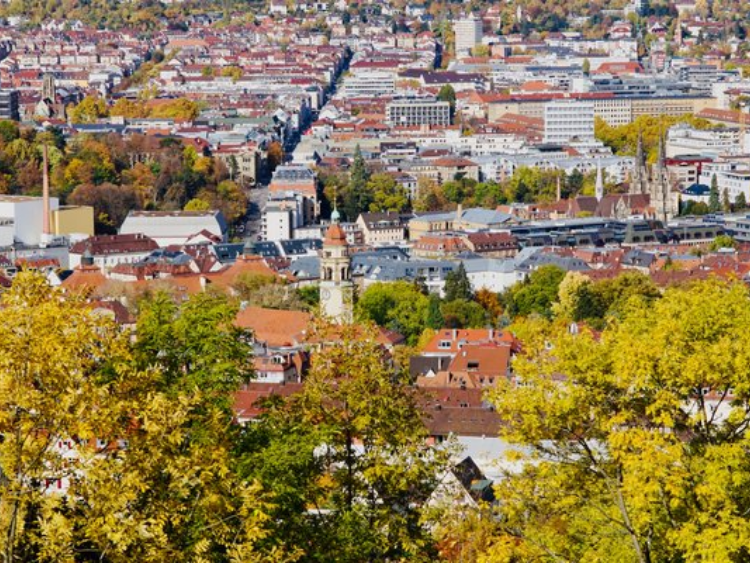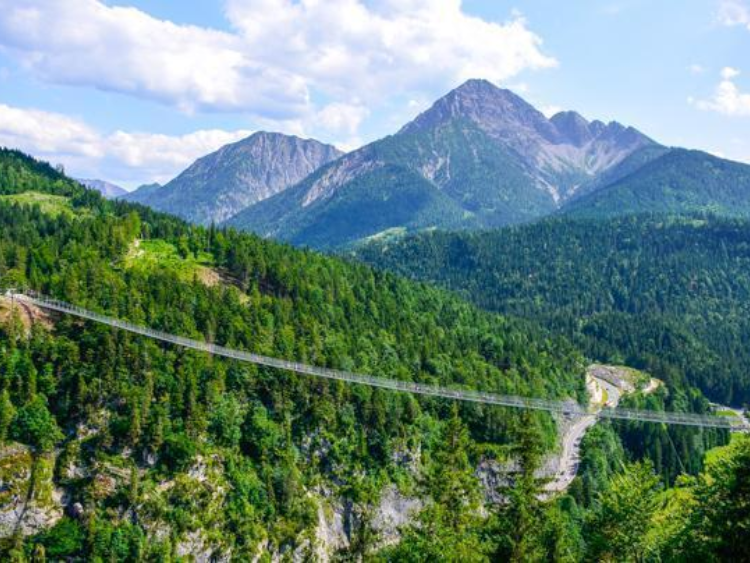
Stuttgart is the capital and largest city of the state of Baden-Württemberg in southwest Germany. It's situated in a basin known as the Stuttgart Cauldron (Stuttgarter Kessel) and is surrounded by vineyards and forests. The city itself lies on the Neckar river. Baden-Württemberg is in the southwestern part of Germany, bordered by France to the west and Switzerland to the south. It's known for its picturesque landscapes, historic towns, and vibrant cultural scene.


ns, and vibrant cultural scene.
2No Para: Stuttgart has a long history, with settlements dating back to the Neolithic period. However, as a significant urban center, it began to develop in the 10th century. The earliest known documentation of Stuttgart dates back to 950 AD, although it likely existed before then. As for the state of Baden-Württemberg, it was formed in 1952 through a merger of the former states of Württemberg-Baden, Baden, and Württemberg-Hohenzollern.
Stuttgart has evolved significantly over the centuries. Here's a brief overview of its history:
1. **Medieval Period**: Stuttgart was founded in the 10th century as a stud farm (Stutengarten) for the Duke of Swabia. Over time, it developed into a small settlement.
2. **Württemberg Duchy**: In the 15th century, Stuttgart became the capital of the Duchy of Württemberg. The city prospered under the rule of the Württemberg dynasty, with notable architectural developments during this time.
3. **Industrialization**: Like many European cities, Stuttgart experienced rapid industrialization in the 19th century. This led to significant growth in population and economic prosperity.
4. **World Wars**: Stuttgart, like much of Germany, was heavily affected by both World War I and World War II. The city suffered extensive damage during air raids in World War II.
5. **Post-war Reconstruction**: After the war, Stuttgart underwent extensive reconstruction. Modern architectural styles emerged, alongside efforts to preserve historic landmarks.
6. **Economic Hub**: In the post-war period, Stuttgart became known as a major industrial and economic center, particularly in the automotive industry. It's home to companies like Mercedes-Benz and Porsche.
7. **Cultural Hub**: Stuttgart is also renowned for its cultural institutions, including museums, theaters, and festivals. It's a vibrant cultural center in the region.
Throughout its history, Stuttgart has faced various challenges and changes, but it remains an important city in Germany, known for its industry, culture, and picturesque surroundings in the Baden-Württemberg region.

The city of Stuttgart was not "invented" by a single individual; rather, it developed over time through natural processes of settlement, urbanization, and governance. Its origins date back to the 10th century when it was founded as a stud farm (Stutengarten) by the Duke of Swabia. Over the centuries, it grew into a significant urban center, particularly after becoming the capital of the Duchy of Württemberg in the 15th century. Various rulers, architects, and inhabitants have contributed to its development and evolution throughout history.

"Stuttgart and Surroundings" is a term used to refer to not just the city of Stuttgart itself, but also the broader metropolitan area and its surrounding regions.
The name "Stuttgart" itself is believed to have originated from the term "Stutengarten," which means "mare's garden" or "stud farm" in German. According to historical records, the area was originally used as a stud farm by the Duke of Swabia in the 10th century. Over time, the settlement that grew around this farm came to be known as Stuttgart.
Adding "and Surroundings" to the name often indicates that the discussion or context includes not just the city of Stuttgart, but also its neighboring towns, suburbs, and countryside. This broader area encompasses a range of communities, industries, cultural landmarks, and natural landscapes that contribute to the overall character and identity of the region.




Stuttgart and its surroundings offer an abundance of opportunities for hiking enthusiasts for several reasons:
1. **Varied Landscapes**: The region around Stuttgart features diverse landscapes, including rolling hills, vineyards, forests, and river valleys. This variety provides hikers with a range of terrain to explore, from leisurely strolls through scenic vineyards to more challenging hikes in the Swabian Alps.
2. **Well-Maintained Trails**: There are numerous well-marked hiking trails in and around Stuttgart, catering to hikers of all skill levels. Whether you're looking for a short nature walk or a multi-day trek, you'll find trails that suit your preferences and abilities.
3. **Scenic Views**: Hiking in Stuttgart offers breathtaking panoramic views of the surrounding countryside, including picturesque valleys, charming villages, and even views of the city itself from higher vantage points.
4. **Cultural Heritage**: Many hiking trails in the Stuttgart region pass by historic sites, medieval castles, and charming rural villages, allowing hikers to immerse themselves in the rich cultural heritage of the area while enjoying nature.
5. **Accessibility**: Stuttgart is well-connected by public transportation, making it easy for hikers to access trailheads and embark on their outdoor adventures without the need for a car.
6. **Outdoor Recreation Facilities**: In addition to hiking, the Stuttgart area offers a range of outdoor recreational activities, including cycling, rock climbing, and water sports, providing ample opportunities for adventure and exploration.
Overall, the combination of stunning natural scenery, well-maintained trails, and cultural attractions makes Stuttgart and its surroundings a paradise for hiking lovers.







Stuttgart and its surroundings indeed offer hiking opportunities throughout the year, each season bringing its own unique charm and experiences:
1. **Spring**: Springtime in Stuttgart brings blooming flowers, lush greenery, and mild temperatures, making it an ideal time for hiking. Trails come alive with vibrant colors, and hikers can enjoy the pleasant weather without the intense heat of summer.
2. **Summer**: While summer can bring warmer temperatures, early mornings and evenings are still perfect for hiking. Higher elevations and shaded trails provide relief from the heat, and hikers can enjoy longer daylight hours for extended adventures.
3. **Autumn**: Fall is a particularly scenic time for hiking in Stuttgart and its surroundings. The foliage transforms into a stunning array of reds, oranges, and yellows, creating picturesque landscapes. Cooler temperatures make for comfortable hiking conditions, and hikers can also enjoy seasonal delights like apple and grape harvests.
4. **Winter**: Even in winter, Stuttgart offers hiking opportunities for those willing to brave the colder temperatures. Lower elevations may see milder weather, and snow-covered trails in the nearby Swabian Alps can provide a magical winter wonderland experience. However, hikers should be prepared for icy conditions and dress accordingly.
Overall, while the best time for hiking may vary depending on personal preferences and weather conditions, Stuttgart and its surroundings offer something for hikers year-round, with each season providing its own unique beauty and experiences.